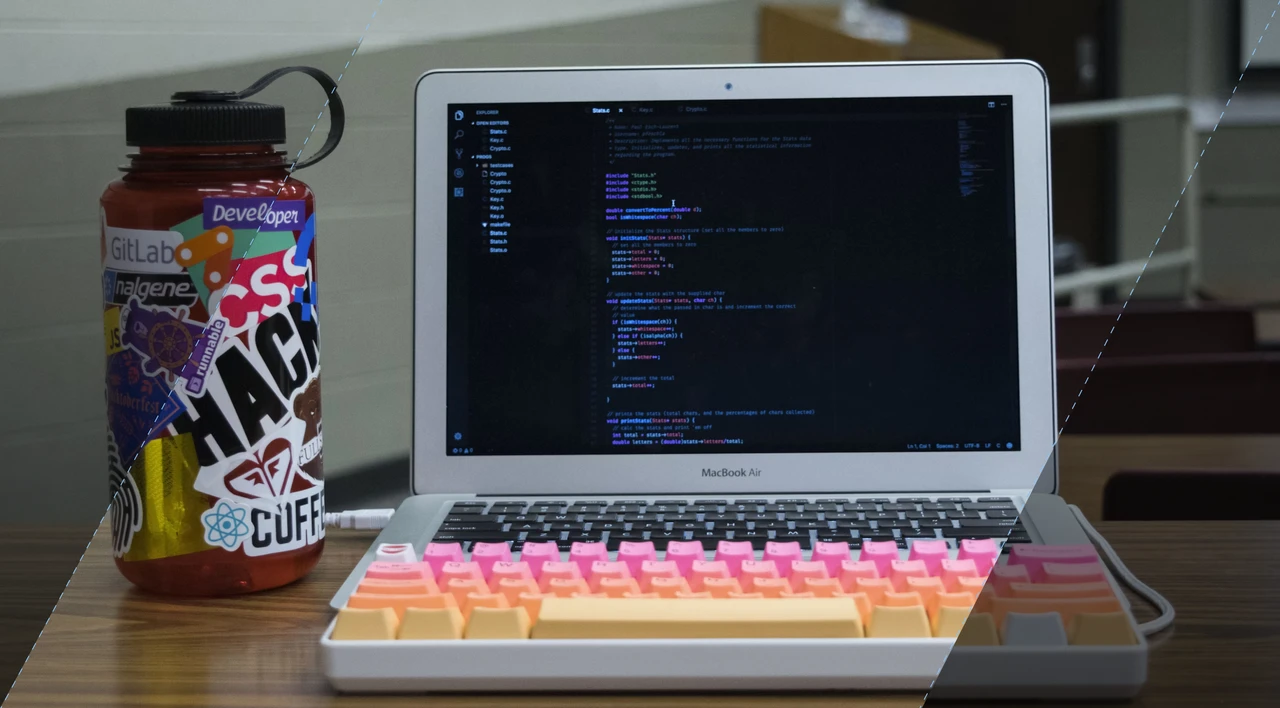SHARE
Compare Tailwind vs Bootstrap: CSS Framework Face-Off

Contents
Contents
Selecting the ideal CSS framework is a key decision that significantly influences the success and efficiency of web development projects. With so many available frameworks, it can be overwhelming to determine which one is best suited for your needs. This comprehensive comparison between the top CSS frameworks, Bootstrap and Tailwind CSS, aims to demystify the decision-making process by delving deep into the unique advantages and limitations of each. This article will cover the key attributes that set these frameworks apart to help determine which one will best elevate and transform your web development projects.
Key Takeaways:
- Bootstrap and Tailwind CSS are popular CSS frameworks used in web development.
- Bootstrap offers a comprehensive selection of pre-styled components and a responsive grid system.
- Tailwind CSS follows a utility-first approach, providing extensive customization options and flexibility.
- The choice between Bootstrap and Tailwind CSS ultimately depends on your specific project requirements and development preferences.
What is Tailwind CSS?
Tailwind CSS, developed by Adam Wathan, is a utility-first CSS framework that allows you to create lightweight and custom user interfaces for your web projects. Since its debut in 2017, Tailwind CSS has gained popularity among developers for its extensive customization options and exceptional flexibility.
With Tailwind CSS, you can quickly transform the appearance and vibe of your elements without the need to write custom CSS code. The framework provides a comprehensive set of pre-defined utility classes that you can apply directly to your HTML elements, making it easy to style and design your user interfaces with ease and efficiency.
Key Features of Tailwind CSS:
- Utility-first CSS framework for creating custom user interfaces
- Lightweight nature and exceptional customizability
- Comprehensive set of pre-defined utility classes
Tailwind CSS Code Example:
Utility-first CSS Framework
Tailwind CSS follows a utility-first approach, which means that it provides a wide range of utility classes that represent specific CSS properties. These utility classes can be directly applied to HTML elements to style them according to your design requirements. This approach allows for quick and efficient customization without the need to write custom CSS code.
Lightweight and Customizable
One of the key advantages of Tailwind CSS is its lightweight nature. The framework is designed to generate optimized and minimal CSS code, resulting in faster load times for your web pages. Additionally, Tailwind CSS offers extensive customization options through its configuration files. You can customize colors, typography, spacing, and more, allowing you to create unique and distinct designs for your user interfaces.
If you’re looking for a CSS framework that offers flexibility, ease of use, and the ability to create custom user interfaces, Tailwind CSS is an excellent choice. Its utility-first approach and extensive customization options empower you to design stunning and engaging web applications effortlessly.
Features of Tailwind CSS
Tailwind CSS is a powerful CSS framework that offers a range of features designed to enhance your web development experience. From its utility-first approach to its extensive collection of utility classes, Tailwind CSS provides developers with the tools they need to create stunning and responsive user interfaces.
Responsive Design
Responsive design is a crucial aspect of modern web development, and Tailwind CSS makes it easy to create layouts that adapt to different screen sizes. The framework includes built-in responsive design utilities, allowing you to easily adjust the appearance of your elements for desktop, tablet, and mobile devices. With Tailwind CSS, you can ensure that your website looks great and functions well across a range of devices.
Customizability
Tailwind CSS offers extensive customization options, allowing you to tailor the framework to your specific project needs. The framework provides configuration files that give you control over various aspects of your design, including colors, spacing, typography, and more. With Tailwind CSS, you have the freedom to create truly unique and custom user interfaces.
Component-Friendly
Tailwind CSS is designed to be component-friendly, making it ideal for building complex and reusable UI components. The framework’s utility classes can be easily applied to individual components, allowing you to create a consistent and cohesive design system. With Tailwind CSS, you can streamline your development process and improve the maintainability of your code.
Extensive Utility Classes
One of the standout features of Tailwind CSS is its extensive collection of utility classes. These classes cover a wide range of design elements, including typography, spacing, colors, flexbox, and grids. With Tailwind CSS, you have a comprehensive toolkit at your fingertips, saving you time and effort in writing custom CSS code.
Dark Mode Support
Tailwind CSS also includes built-in support for implementing dark mode in your interfaces. Dark mode has become increasingly popular, and with Tailwind CSS, you can easily create interfaces that seamlessly adapt to user preferences. Whether your users prefer a light or dark theme, Tailwind CSS has you covered.
What is Bootstrap?
Bootstrap is a widely used CSS framework renowned for its ability to simplify web development and create responsive websites. It is the CSS framework of choice for 18% of websites, in comparison to Tailwind which is used by only 0.1% of websites. Initially conceived during a friendly competition at Twitter in August 2011, Bootstrap has since become a popular choice for developers seeking to enhance their projects with a robust set of tools and functionalities.
By seamlessly merging HTML, CSS, and JavaScript, Bootstrap empowers developers to build better, faster, and easier websites that are adaptable to various devices and screen sizes.
This versatile framework offers a plethora of pre-styled components, a responsive grid system, and a library of CSS and JavaScript-based design templates. Its extensive features and compatibility with multiple server-side technologies make it a valuable asset in modern web development.
Whether you’re a seasoned developer or a beginner starting your coding journey, Bootstrap provides a solid foundation for creating visually appealing and interactive websites.
|
Key Features of Bootstrap |
Description |
|
Pre-styled Components |
Bootstrap offers an extensive collection of pre-styled components, including navigation bars, buttons, forms, carousels, and more. These components can be easily incorporated into your project, saving you valuable development time. |
|
Responsive Grid System |
Bootstrap’s responsive grid system provides developers with a flexible and powerful layout system. It allows for the creation of responsive designs that seamlessly adapt to different screen sizes, ensuring a consistent and optimized user experience. |
|
CSS and JavaScript-based Design Templates |
Bootstrap offers a variety of CSS and JavaScript-based design templates that can be customized and tailored to fit your project’s unique requirements. These templates provide a head start in creating visually stunning and interactive web pages. |
|
Compatibility with Server-side Technologies |
Bootstrap is compatible with several server-side technologies, making it accessible for developers working with different web development stacks. Whether you’re using PHP, Ruby on Rails, or any other server-side language, Bootstrap seamlessly integrates into your workflow. |
|
Responsive Design |
Bootstrap’s responsive design ensures that websites developed using the framework automatically adapt to different devices and screen sizes. This adaptability is crucial in today’s mobile-first world, allowing your website to provide an optimal viewing experience for every user. |
Bootstrap CSS Code Example:
Features of Bootstrap
Bootstrap is a widely-used CSS framework that offers a range of impressive features to enhance your web development projects. Let’s explore some key features that make Bootstrap an excellent choice:
1. Responsive Design
Bootstrap empowers you to create responsive websites and applications that automatically adapt to different screen sizes and devices. This ensures a seamless user experience on desktops, tablets, and mobile devices.
2. Flexible Grid System
With Bootstrap’s powerful grid system, you can easily create responsive layouts by organizing content into rows and columns. This flexibility allows you to design and structure your web pages precisely as you envision them.
React Native Development Experts
Flatirons Development provides React Native development services tailored for your business needs.
Get the CEO's Take
Handpicked tech insights and trends from our CEO.
React Native Development Experts
Flatirons Development provides React Native development services tailored for your business needs.
Get the CEO's Take
Handpicked tech insights and trends from our CEO.

Enterprise Computing: Transforming Business Operations
Flatirons
Oct 09, 2025
Explore the Top Embedded Systems Examples of Today
Flatirons
Oct 04, 2025
Best Manual Testing Tools to Boost Your Software Quality
Flatirons
Sep 28, 2025
Digital Product Development: Enhance Your Business Offerings
Flatirons
Sep 12, 2025
React SEO: Optimize Your React Apps for Search Engines
Flatirons
Sep 07, 2025
Will Software Engineers Be Replaced by AI?
Flatirons
Aug 31, 2025